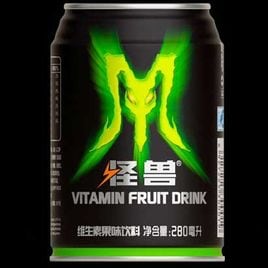The second-biggest global functional drink producer registered 猛事特—Mengshite in Chinese—this year, using Coca-Cola affiliate Shanghai Shenmei Beverage and Food Company as local bottler.
Monster’s American parent has its eyes on replicating the energy drink’s popularity in its home market, where it enjoys 52.8% market share largely due to its large size and high taurine content.
Monster’s chief executive had earlier indicated his strong intention to break into the huge Chinese market in the next 5-6 years.
Speaking in late 2014, Rodney Sacks predicted that the brand would crack the energy drinks segment, though he acknowledged that registering the product as a functional beverage would prove to be complicated.

China has become the biggest global market for energy drinks and is continuing to show world-beating growth. In 2015, sales stood at over 1.30bn litres, up 25% year on year, with revenues increasing by over 15% to US$9bn, according to analyst CCM.
However Chinese functional beverage consumption still remains low, with the average consumer buying less than 2 litres each year—not even a tenth of the figure in developed countries.
This huge market has attracted a number of domestic and overseas producers. Yet it may be harder for foreign ventures to break into the Chinese market. In Monster’s case, its trademark had already been registered by a third-party.
Shanghai Monster—“曼斯特”, or Mansite in Chinese—had registered the trade mark "怪兽" (monster in English) and launched a fruit drink under this name in China. Even worse, Shanghai Monster products have similar packaging to that of the American brand.
There are even more brand copycats in stores with various synonyms or puns on the name. Together these have the potential to confuse consumers, analysts believe.
“Entering China drink market, it will be the biggest challenge for Monster Beverage to distinguish itself from the Chinese monster version,” said Liang Jiawei, editor of Amino Acids China News.
Red Bull, Eastroc Beverage, Hi-Tiger and Mizone are also popular energy drinks in China, where Red Bull accounts for around 80% of market share.
Though Monster has now entered the market, having launched in Guangzhou, Shenzhen and some other cities last week, it still remains to be seen how the brand will localise its products.
Sacks appeared optimistic about the Chinese market’s potential, even predicting that Monster Energy would snaffle 30-33% of the energy drinks segment. At this stage, though, this sanguine viewpoint appears premature at this stage.
“Facing such difficulties, the performance of Monster Beverage remains to be seen in China,” Liang said.
